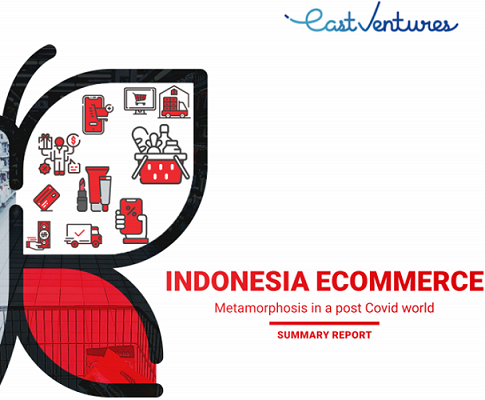
Executive Summary
Indonesia’s eCommerce is likely to see some near-term pains due to the disruption unleashed by COVID-19. However, the sector is likely to see meaningful long-term gains as the ecosystem steps up to a newer set of demand and supply requirements. The emerging challenges and opportunities could necessitate some players to double down on their existing strategy, while others might have to diversify and/or pivot. We expect the eCommerce sector to emerge as a net-beneficiary of the current crisis as it offers a strong tailwind for buyers and sellers to go online.
Some of the key highlights from this report are:
1. Big GMV set to get bigger
Indonesia’s $23 bn formal eCommerce GMV in 2019is likely shrug off the challenges of Covid and grow 50+% y-o-y to reach USD 35Bn in 2020 and ride the digital adoption wave to reach $ 101 bn in 2025, as perour estimates. In 2019, Electronics (69% contribution), Fashion (16% contribution), and Beauty (9%contribution) had emerged as the top-three categories in terms of their absolute size and share of market. However, from a growth perspective, grocery, household appliances, personal care (part of Beauty), are expected to be the leading growth categories over the short to medium term driven by the impact of Covid.
2. Covid-19 to have a positive impact on sector in longer run
Our supply side research indicates that online FMCG/Grocery sector is currently seeing a massive adoption boom due to Covid-19- with many of these first time eGrocery shoppers likely to stick around. However, post some short-term discretionary spending uncertainties are smoothened out, even non-grocery categories like electronics, fashion, beauty are likely to see a catalytic positive impact due to covid-19 and long-term growth acceleration. As 80% of our surveyed consumers and expecting a spending rebound in next 6 months and prefer the comfort of their home for shopping needs rather than going in the crowded offline outlets. However, e-tailers still need to solve for the short term, lockdown driven challenges of insufficient delivery and supply chain constraints. From a readiness perspective, the large horizontals seem better positioned to cater to the short and long end of the demand curve. Vertical players could be better suited to swiftly consider online and offline partnerships and especially take advantage of their initial lead in the ‘fresh’ subcategory within overall eGrocery.
3. Massive jump in online user base numbers
The pandemic is expected to give a major fillip to the online user base with an estimated 12+mn users (1% higher online penetration) coming onboard during CY20. Such an increase in user count could have taken about 1.5-2 years under ordinary circumstances. eCommerce companies can capitalise on many of these first-time users by meeting three key customer needs i.e. Delivery Speed, Product Safety and Product Variety. In addition, competitive Delivery Pricing could be an additional factor to be mindful of when catering to ex-Java areas.
4. Brands warm up to eCommerce while pause on aggressive seller side monetization
Prior to Covid, the growing relevance of online sales channels along with the online platforms’ need for monetisation was leading to higher commissions, adrates,value-added services etc. from sellers, brands and manufacturers. However, basis some of the seller challenges that we observe from our seller surveys, this trend is likely to hit a pause till late 2020. However, Covid has led brands to take eCommerce more seriously than ever before and willing to closely partner with platforms and spend on ad dollars to drive online growth. From a platform standpoint, B2C share is likely to expand in 2020 and rising B2C share will enable platforms’ to improve their customer touchpoints, generate higher quality revenues and margins.
5. Move to in-house logistics accelerated by COVID
In-house logistics has emerged as a key differentiator during COVID-19 for some of the large horizontal eCommerce players. It has allowed them to cater to the unprecedented surge in shipment volumes and will continue to see further investments in our view. In general, in-house logistics allows players to grow B2C shipments, mitigate risks of fraud and enables superior customer touchpoints. We estimate in-house logistics to account for 35% of the ~120mn shipments in April’20, up from 24% share of total shipments in Q4’19. Despite
in-house logistics growth, sizeable 3PLs will continue to remain relevant although alignment with the larger players will become progressively more critical over time. Additionally, the ability to offer instant/express deliveries will be a key differentiator as consumers exhibit higher than ever willingness to adopt and pay for such services.
6. Payments: meaningful surge in eWallets to continue
Consumers’ preference to switch to contactless, safer, and more convenient payment modes has triggered a sharp increase in the share of eWallet payments, which reached 22% of the total formal eCommerce transactions in Apr’ 20 versus 7% in 1Q19. This shift also led to a decline in % share for Cash on Delivery (CoD) transactions, which was seeing rapid growth prior to this crisis as platforms sought to onboard first time, cash-preferring customers. From a supply-side perspective, both large eWallet players including OVO, GoPay, DANA and emerging ones like ShopeePay have stepped-up to meet this surging demand via suitable cashback schemes.
7. Continued Consolidation but pockets of opportunity for verticals
The top-three platforms, Tokopedia, Shopee and Lazada now account for more than three-quarters of the sector’s GMV. We expect GMV share to consolidate even more going forward. Players with relatively lower GMV shares could focus on specialised / vertical categories including eGrocery where they can differentiate on experience v/s competing on pricing.
8. Emerging path to profitability
We expect the short-term challenges to weaken the unit economics for the sector in 2020. However, as the players streamline their operations to the new norms and brand side monetization is accelerated, we expect profitability metrics to improve from 2021 onwards. Accordingly, we estimate sector-level contribution margins to dilute to (6-7%) in 2020 from (3-4%) in 2019, before staging a recovery to reach ~ 1% in 2025.
Download This Report
Related Reports


SEA’s USD 121 Bn food-service resurgence: lessons from regional leaders

Southeast Asia’s Digital Advertising Revolution: A $35 Billion Market Analysis
Stay updated with the latest Redsights
For regular updates on industries and market trends.
© 2025 RedSeer Management Consulting Pvt. Ltd. All rights reserved.




